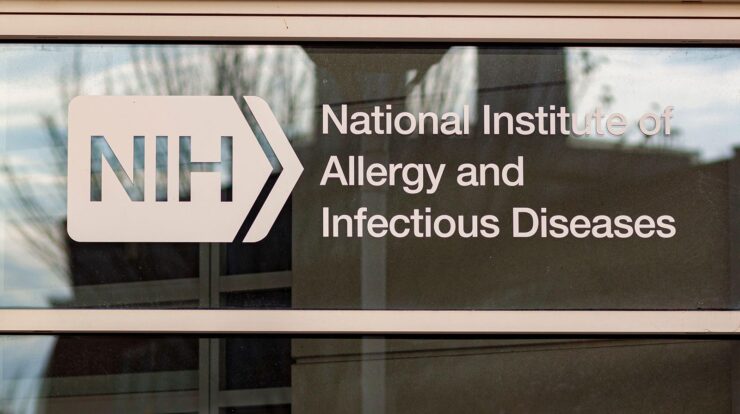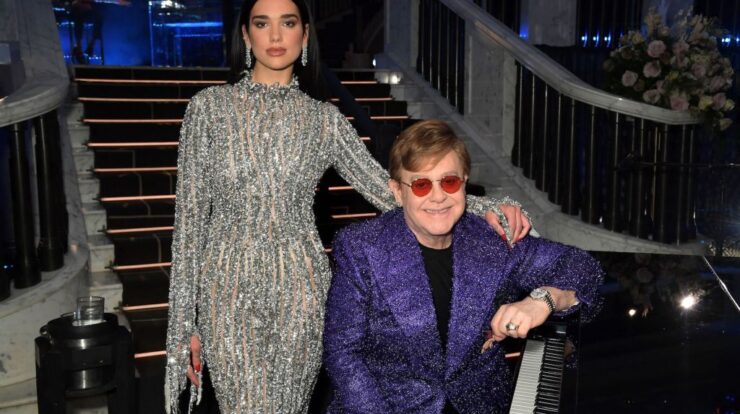
The Trump administration’s extraordinary $500 million award for a widely effective influenza vaccine has puzzled specialists in vaccines and pandemic readiness. They noted that the initiative was still in its initial phase, depended on outdated technology, and was merely one among over 200 similar projects.
HHS Secretary Robert F. Kennedy Jr. shifted the money from a pandemic preparedness fund to a vaccine development program led by two scientists whom the administration recently named to senior positions at the NIH.
While some experts were pleased that Kennedy had supported any vaccine project, they said the May 1 announcement contravened sound scientific policy, appeared arbitrary, and raised the kinds of questions about conflicts of interest that have dogged many of President Donald Trump’s actions.
Putting extensive efforts into just one vaccine candidate “resembles betting all your cash on a solitary horse at the Kentucky Derby,” explained William Schaffner, MD, a Vanderbilt University professor and former president of the National Foundation for Infectious Diseases. “Typically, in scientific research, we distribute our investments across multiple contenders since it’s hard to predict which will come out victorious.”
Some people found the decision puzzling because the experimental vaccine employs outdated technology from the 1970s and does not utilize methods refined more recently with support from HHS and the military.
“This is definitely not a next-generation vaccine,” stated Rick Bright, PhD, who headed HHS’ Biomedical Advanced Research and Development Authority, known as BARDA, during the initial Trump administration. “Its technology seems almost from an earlier era—either first-generation or at best early second-generation—and it’s astonishing.”
The vaccine is being developed at the National Institute for Allergy and Infectious Diseases (NIAID) by Jeffrey Taubenberger, MD, PhD, who was appointed acting head of the institute by Trump in late April, along with his colleague Matthew Memoli, MD—a critic of U.S. COVID-19 policies chosen by Trump to oversee the NIH up until April 1st when Jay Bhattacharya, MD, PhD assumed leadership. Dr. Bhattacharya then designated Memoli as his primary deputy.
In 1997, Taubenberger became well-known as a scientist at the Armed Forces Institute of Pathology when his laboratory sequenced the genome of the deadly 1918 flu virus, utilizing tissue samples from American servicemen who perished during that epidemic. In 2006, he transferred to the National Institutes of Health (NIH).
In a press release dated May 1, HHS referred to the Taubenberger-Memoli vaccine effort as the “Gold Standard for Generations,” stating that this marked “a significant move towards greater openness, efficiency, and thorough readiness.” Bhattacharya commented that it signified a “change of paradigm.”
However, the objective of the NIH vaccine developers to create a single dose that guards against various or even all types of influenza — as opposed to current vaccines which have to be administered annually due to changes in the virus — isn’t novel.
Then-NIAID Director Anthony Fauci, MD, launched a network of academic researchers in pursuit of a broadly protective flu vaccine in 2019. In addition to that
NIH-led consortium
More than 200 influenza vaccines are currently being developed in the United States and elsewhere around the world.
Many opt for cutting-edge technologies, with some advancing further in human trials compared to the Taubenberger vaccine. The method employed by this vaccine seems largely similar to the one utilized in influenza vaccinations beginning in 1944, according to Bright.
In the press statement, HHS characterized the vaccine as being “in advanced trials,” noting that it would generate “robust” reactions and provide “lasting immunity.” However, Taubenberger and his team have not released a full human trial study of the vaccine yet.
A research demonstrating the effectiveness of the vaccine
Protected mice against the flu were observed in 2022.
For Operation Warp Speed, which led to the creation of the COVID vaccine during Trump’s first term, government scientists reviewed detailed plans and data from academic and commercial laboratories vying for federal money, said
Greg Poland
, MD, a flu expert and president of the Atria Health Academy of Science and Medicine. “If that’s happening here, it’s opaque to me,” he said.
When asked what data beyond its press release supported the decision, HHS spokesperson Andrew Nixon pointed to the agency’s one-page statement. Asked whether the decision would curtail funding for the Fauci-created consortium or other universal vaccine approaches, Nixon did not specifically respond. “Generation Gold Standard is the most promising,” he said in an email.
Taubenberger did not respond to a request for comment. Nixon and NIH spokesperson Amanda Fine did not respond to requests for an interview with Taubenberger or Memoli.
The HHS statement stressed that by developing the vaccine in-house, the government “ensures radical transparency, public accountability, and freedom from commercial conflicts of interest.” While any vaccine would eventually have to be made commercially, NIH involvement through more stages of development could give the government greater influence on any vaccine’s eventual price, Schaffner said.
While the COVID vaccines developed by Moderna and Pfizer-BioNTech showcased the pinnacle of vaccine technology with their advanced methodologies not previously utilized in immunizations, the method employed by Taubenberger and Memoli harks back to more traditional techniques.
Their vaccine is created by rendering influenza viruses inactive with a potentially cancer-causing substance known as beta-propiolactone. Researchers have employed this chemical to deactivate viruses since the 1950s at least. The technique of completely deactivating the virus, predominantly through various chemicals, remained the conventional approach for producing flu vaccines until the 1970s. At that time, the process was altered partially due to concerns about whole-virus vaccines leading to high fever or even convulsions in young patients.
The scarce publicly available information from the Taubenberger vaccine,
From the preliminary safety study
Involving 45 participants, the study revealed no significant adverse reactions. Researchers are evaluating the vaccine both as a conventional injection and as a nasal mist, aiming to prevent the virus from taking hold in the respiratory system before it leads to widespread infection.
The idea of a universal influenza A pandemic vaccine is quite promising,” stated Poland, praising Taubenberger as an outstanding researcher. However, he also mentioned: “I have my doubts regarding the platform, and the financial figure seems unclear. The development of this vaccine is still in its initial stages.
Paul Friedrichs, MD, a former Air Force general who headed the Office of Pandemic Preparedness and Response Policy under President Joe Biden at the White House, stated that allocating “$500 million up front without much supporting data is unprecedented as far as I’m concerned.”
The methods for vaccine development have significantly advanced over numerous decades,” Friedrichs stated. “Why would we revert to techniques historically linked with higher or more common side effects?
It seemed that the government was moving funds for the Taubenberger vaccine development from an established $1.3 billion vaccine pool at Project NextGen, which is primarily focused on COVID-19 initiatives within BARDA, according to Friedrichs. This funding was mainly intended to back cutting-edge studies on COVID-19 as well as other viral vaccinations, covering threats posed by new pathogens.
“It is ‘extremely worrying that we are downplaying COVID, and we might come to regret this,’” Poland stated. “This assumption relies on the idea that we won’t encounter a COVID variant capable of evading the present relatively strong level of COVID immunity.”
Nixon said Project NextGen, for which some funds were earmarked for mRNA research, is under review. Kennedy is critical of mRNA vaccines, once claiming, falsely, that they are the deadliest vaccines in history.
Ted Ross, PhD, director of global vaccine development at the Cleveland Clinic, said he was “happy to see them investing in respiratory vaccines, including a universal flu vaccine, with all the programs they’ve been cutting.”
“But I don’t believe this is the sole strategy,” Ross stated. “There are other universal flu vaccines under development, but their successes and failures have yet to be determined.”
His group, which is part of an NIAID-supported flu vaccine network, is leveraging artificial intelligence and computer simulations to develop vaccines that provide extensive protection against various forms of influenza, covering both seasonal outbreaks and potential pandemics.
As acting director, Memoli was responsible for initiating the administration’s extensive reductions at the NIH, which involved cutting approximately 800 agency grants totaling more than $2 billion.
Over 1,200 NIH staff members
have lost their jobs, and numerous researchers, like Ross, find themselves in an uncertain state.
His lab is close to testing a candidate vaccine on people, Ross said, while waiting to find out about its NIH funding. “I’m not sure whether my contract is on the chopping block,” he said.
KFF Health
News
is a national newsroom that produces in-depth journalism about health issues and is one of the core operating programs at KFF — an independent source of health policy research, polling, and journalism. Learn more about
KFF
.





